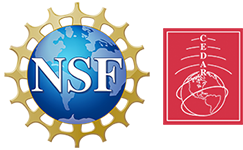Auroral Recognition from All-Sky Image Data using a Deep Learning Technique
Since 2018, auroral image data in visible frequency have been collected at Jang Bogo Station (JBS), Antarctica, using the All-Sky camera with a 1-minute temporal resolution. These data have been used to calculate auroral occurrence rates to investigate the characteristics of the auroral occurrences at JBS. Accurate auroral recognition is essential for the estimation of reliable occurrence rate. In the previous method, auroras were identified by subtracting two consecutive images with 1-minute interval to effectively eliminate background light. However, this approach often failed to detect stationary auroras that persist with consistent position and brightness across consecutive images. Recognizing auroras from background image remains challenging due to their ambiguous boundaries and irregular brightness variations. Furthermore, the large volume of image data requires efficient image processing methods. To overcome these limitations, we employ a Fully Convolutional Network (FCN) with a ResNet-50 backbone pre-trained on a subset of the Microsoft Common Objects in Context (MS COCO) dataset. This deep learning approach significantly improves recognition accuracy, particularly for stationary auroras, resulting in more reliable auroral occurrence rates.
